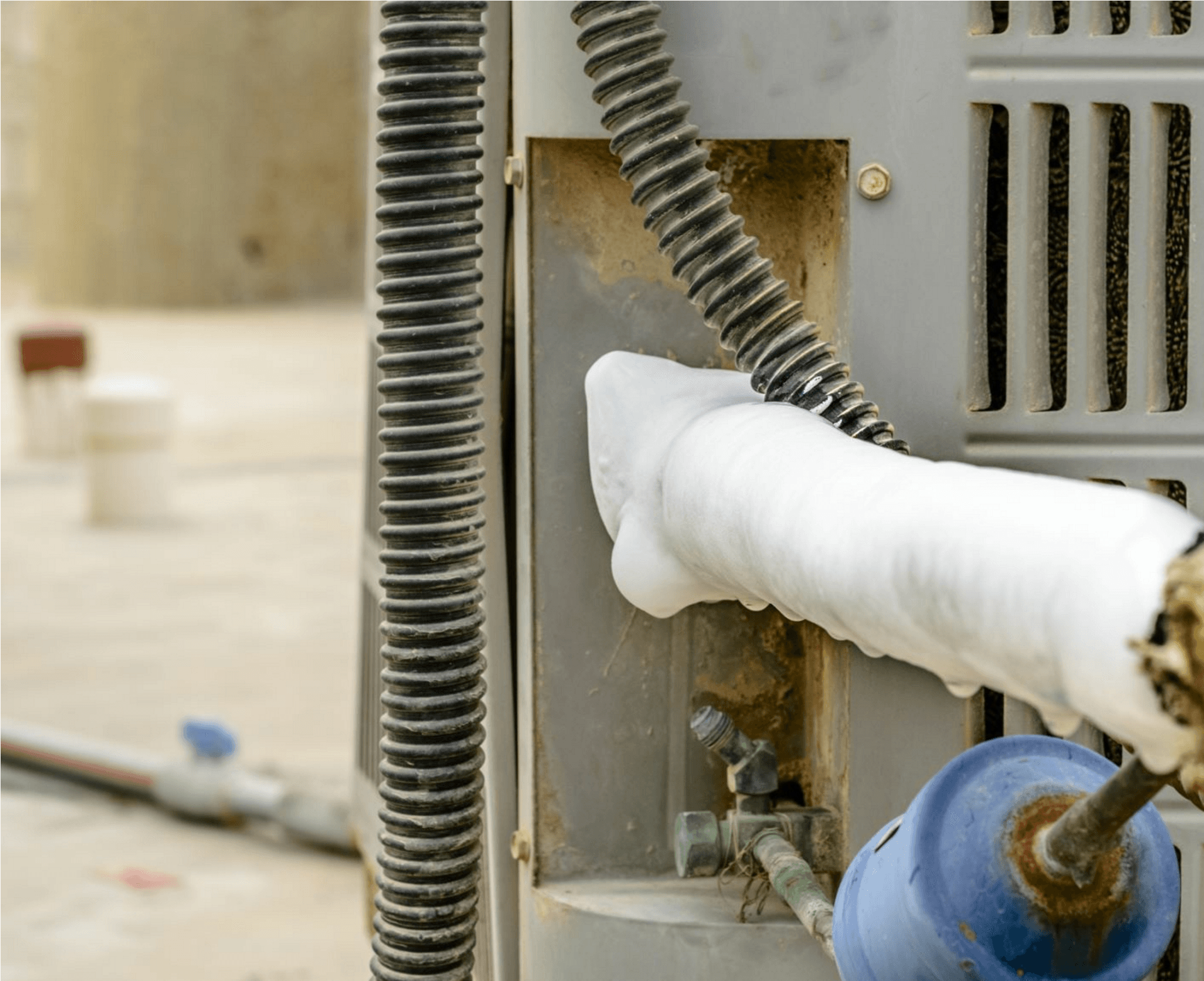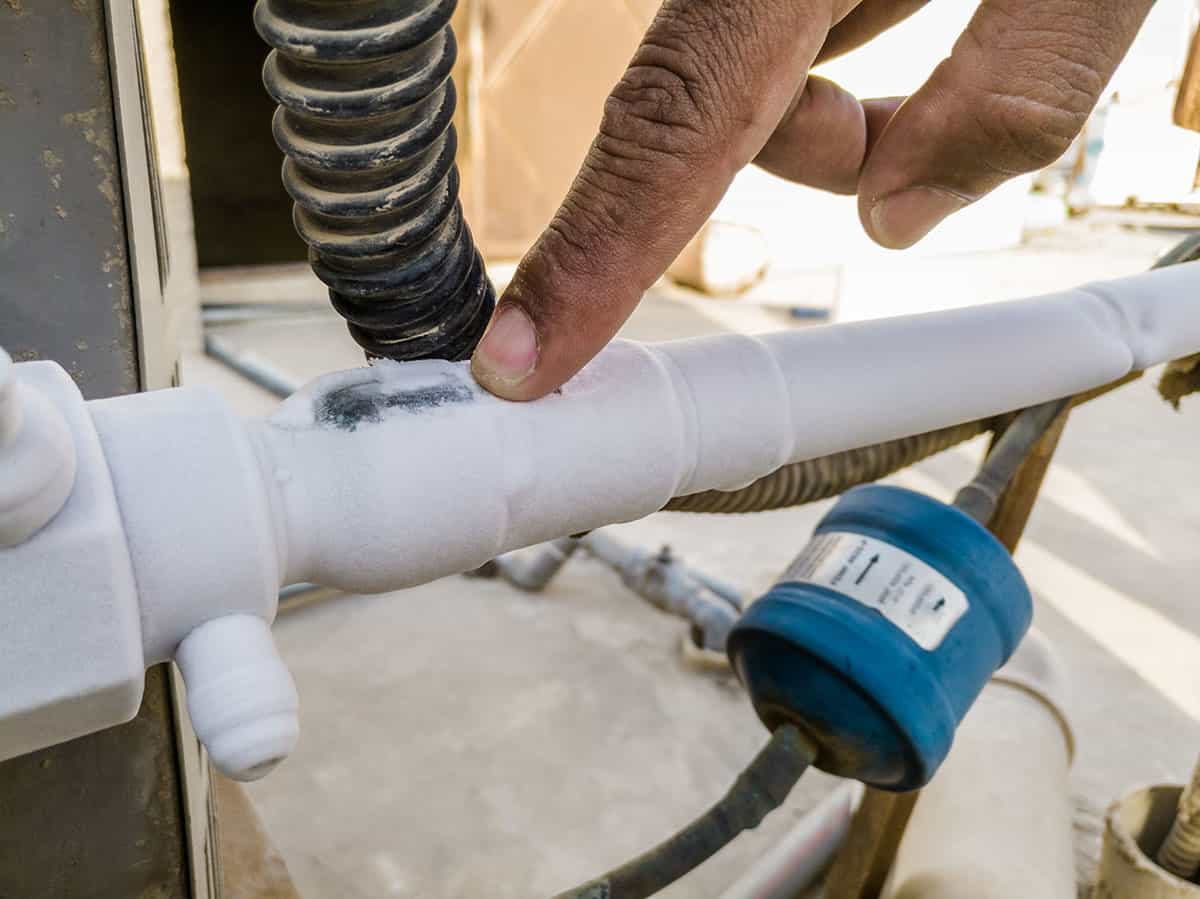Icy Air Conditioner Pipe - Causes and How to Fix the Problem
Icy Air Conditioner Pipe - Causes and How to Fix the Problem
Blog Article
Every person will have their own rationale with regards to What Do I Do If My AC Pipe Is Frozen.

Intro
Discovering that your AC pipeline is iced up can be worrying, particularly during warm summer months when you rely upon your ac unit the most. Recognizing what to do in such a situation is critical to prevent additional damages to your cooling system and guarantee your convenience indoors.
Understanding the Causes
A number of aspects can add to the freezing of an air conditioning pipeline. Recognizing these reasons can aid you address the concern properly.
Lack of Airflow
One common cause of a frozen air conditioning pipe is inadequate airflow. When the airflow over the evaporator coil is limited, it can create the coil to go down below freezing temperature level, causing ice formation on the pipe.
Reduced Refrigerant Levels
Not enough cooling agent levels in your air conditioner system can additionally lead to a frozen pipeline. Low refrigerant degrees can trigger the stress in the system to go down, leading to the freezing of moisture on the evaporator coil.
Winter Conditions
In cooler environments, freezing temperatures outside can add to the freezing of air conditioning pipelines. If your air conditioning unit is not appropriately shielded or if there are leaks in the ductwork, cool air can infiltrate the system, triggering the pipeline to freeze.
Dirty Air Filters
Filthy or clogged up air filters can limit airflow in your AC system, causing numerous issues, including a frozen pipe. It's vital to replace or clean your air filters routinely to make sure appropriate air movement and protect against ice build-up.
Indicators of a Frozen Air Conditioner Pipe
Identifying the indicators of an icy air conditioner pipeline is critical for punctual action.
Decreased Airflow
If you notice a significant decline in airflow from your vents, it could indicate an icy pipeline.
Ice Buildup on the Pipe
Visible ice build-up on the refrigerant line or the evaporator coil is a clear indication of an icy air conditioning pipe.
Weird Sounds from the Unit
Unusual audios, such as hissing or bubbling, originating from your air conditioning device can indicate that there's ice existing on the pipeline.
Immediate Actions to Take
When faced with a frozen a/c pipeline, it's vital to act promptly to prevent additional damages to your air conditioning system.
Shutting off the air conditioner
The primary step is to switch off your air conditioning system to stop the system from running and intensifying the problem.
Looking for Blockages
Evaluate the location around the interior device for any kind of blockages that might be obstructing air movement, such as furnishings or curtains.
Thawing the Pipe
You can use gentle methods like positioning towels taken in cozy water around the frozen pipe to assist thaw it slowly.
Preventive Measures
Taking safety nets can aid prevent future events of an icy air conditioner pipeline.
Routine Maintenance Checks
Schedule routine maintenance consult an expert HVAC professional to make certain that your air conditioner system is running effectively.
Transforming Air Filters
Consistently replace or clean your air filters to stop airflow limitations and maintain optimum performance.
Protecting Exposed Pipes
If your air conditioner pipelines are subjected to chilly temperature levels, consider insulating them to avoid freezing throughout winter months.
Seeking Professional Help
If DIY techniques fail to settle the issue or if you're unsure about exactly how to proceed, it's finest to seek aid from a certified HVAC specialist.
When DIY Methods Fail
If your efforts to thaw the pipe or address other issues are not successful, it's time to hire a professional.
Value of Hiring a Professional HVAC Technician
A licensed HVAC specialist has the knowledge and tools needed to identify and repair concerns with your a/c system safely and efficiently.
Final thought
Dealing with an icy AC pipeline can be a discouraging experience, but recognizing how to respond can aid lessen damage and restore convenience to your home. By understanding the reasons, acknowledging the indications, and taking punctual activity, you can successfully address the concern and avoid future occurrences.
Frozen AC Line: Why It Happens & What To Do About It
A frozen AC line can be a rather peculiar sight in a place like Phoenix, Arizona where nothing ever freezes. In this post, we’ll discuss what makes an air conditioner line frozen – and what you can do about it.
Dirty Air Filters
Did you know that you should be cleaning or replacing your air filters on a monthly basis? Failing to do this can result in airflow issues that, in turn, cause your evaporator coils and lines to freeze over. You’ll notice a buildup of ice on both components, although the buildup on your pipes will, of course, be more evident unless you open your air condition up to reveal the coils.
What To Do About It
Give your air filter a good cleaning if it’s reusable. If not, replace the filter outright. Next, switch your air conditioner’s fan setting on and leave it there for 2-3 hours. This will draw warm air in, helping to thaw your evaporator coil. You can also check out this article for some tips on cleaning the coils themselves if you’d like to speed the process up. Before you switch the unit back to its normal state, make sure the supply vents are completely unobstructed and free of dust or other debris.
If you keep having this issue even after replacing your filters regularly, contact a local HVAC repair company and have them inspect your evaporator coil, ductwork, and any other components that may be at fault. If you live in the Phoenix, Arizona area, give American Home Water and Air a call.
Low Refrigerant Levels/Leakage
What To Do About It
Contrary to what air conditioner “recharge” companies often tell their clients about refrigerant, it should never need to be simply refilled. You see, refrigerant runs in what experts refer to as a “closed loop.” Refrigerant really shouldn’t be leaving that loop. If it is, you’ve got a leak.
Paying someone to come and pump more refrigerant into your system (aka “recharge” it) isn’t the solution. Doing that will simply kick the can down the road. Besides, refrigerant leaks can be harmful to the environment and people in your home.
Rather, you need to take care of the leak with the help of a technician. Check out this article for some more information about dealing with air conditioners that are leaking refrigerant. Before you contact a technician, switch your thermostat to the off position. Then, switch the fan setting on and let it run for 2-3 hours so the unit can thaw.
Improper Temperature Setting
Improper temperature settings can also cause a drop in your air conditioner’s pressure. What many people don’t realize is that air conditioners are actually designed to run when temperatures have fallen above roughly 60 degrees Fahrenheit. If you run the unit when it’s cold outside, you’ll run into many issues, including frozen components.

Do you enjoy reading up on Why Is Ice On My Outside Air Conditione? Post a remark directly below. We will be glad to know your responses about this post. In hopes to see you back again later on. Sharing is caring. Who knows, you will be helping someone out. Thanks so much for your time invested reading it.
Get A Free Estimate Report this page